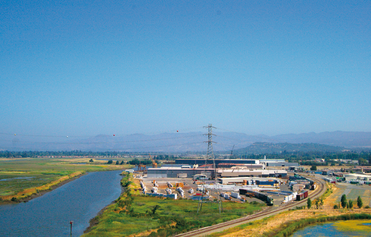Don't be fooled.
Only one candidate is working
to reduce the amount of housing
the State requires of us and ensure
slow growth in Napa County.

I oppose a large development at Napa Pipe. There was a time when a large development was needed to meet the State housing mandates and avoid urban zoning in our rural areas. That time has passed. My successful advocacy at the regional level has significantly reduced the State’s demands eliminating the need for a large development at Napa Pipe.”
City of Napa desires to be "Priority Development Area" for Bay Area Housing!
On January 17, 2012, both my opponents voted to designate parts of the City of Napa as “Priority Development Areas” for housing in the Bay Area. This will require that the City zone for significantly more housing in the future. I oppose this designation as it is contrary to our efforts to limit housing growth in our community.
As the name implies, a "Priority Development Area" (PDA) is an area designated to receive a greater allocation of the Bay Area's housing in return for the promise of more transportation funding. It is expected that over half of the Bay Area's housing units will be allocated to PDAs.
Background
Unfortunately, most do not appreciate the legal constraints that drive this entire discussion.
The State of California mandates that each city and county zone for new housing and dictates the amount of housing to be zoned. In the current round, which occurs about every 7 years, Napa County is required to zone for 800 units of housing outside of city limits.
State law also requires that we abide with what was already committed to in our Housing element, which is the 20 acres, or 350 units at the Napa Pipe site. If we don’t rezone as required, then the allocation gets added to our next round and we have to find zoning for 700 units instead of 350 units and our problem multiplies. We are also currently being sued by those claiming our existing housing element does not show enough housing. Failure to support what was already committed to could put us in legal jeopardy for hundreds of thousands in legal fees and the need to rezone even more land.
The legal jeopardy is real. In the previous round the unincorporated county (outside city limits) was required to zone for over 2000 units. We did not comply and were sued. We paid the private lawyer who sued us $400,000 to settle and were required to zone rural lands in Angwin, Lake Berryessa, and Coombsville for housing anyway. We also had to build a $10 million parking garage for the City of Napa to help us with our housing allocation and allow the City of American Canyon to annex a couple hundred acres for them to help us. Not complying with the state mandate was very expensive and did not avoid the need to zone for housing. Thus, we take this process very seriously.
Through my efforts at the regional level, we were able to reduce the housing allocation to Napa County to 800 units. By designating 350 units of housing at Napa Pipe, we were able to reduce the urban zoning in Angwin and eliminate the urban designations at Lake Berryessa and Coombsville. Thus, allocating these units to this former industrial site reduced the potential for sprawl and has protected our agricultural and open space lands.
It appears future allocations will be even smaller, eliminating the need for a larger development at Napa Pipe. In my role as President of Association of Bay Area Governments (ABAG), which will continue if I am re-elected, I am in a position to better protect our county's interests.
Note that zoning for housing is not building housing. What gets built will be determined by the current housing market realities. I would not be surprised if the property is ultimately used for a more intense industrial use. In the mean time, we need to comply with housing law.
My first priority is avoiding the need to zone agricultural and watershed land for urban uses. My second priority is to minimize the amount of housing we are zoning for anywhere in Napa as that puts continued pressure on our infrastructure and our rural/urban boundaries.
For more information on the proposals for the Napa Pipe property, see Proposal
